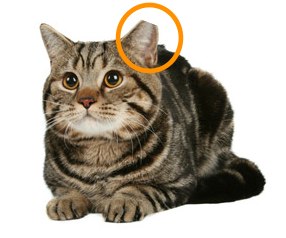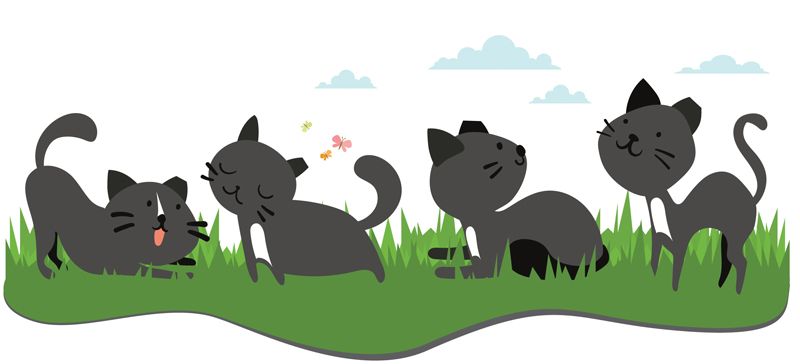Trap-Neuter-Return, or TNR for short, is internationally recognized as the humane and effective way to address issues with outdoor, free-roaming community cats without a known owner. Cats in a TNR program may range in sociability with humans from friendly to truly feral (lives outdoors, avoids human contact, does not allow itself to be handled or touched, and usually remains hidden from humans).
Trap-Neuter-Vaccinate-Return, or TNVR; Trap-Neuter-Return-Manage, or TNRM; and Shelter-Neuter-Return, or SNR, are other terms you may hear when discussing issues of community cats.
In a TNR program that is following Best Practices, cats are humanely trapped and transported to a clinic or veterinarian for spay or neuter surgery, a rabies vaccine, an eartip, and any other services/treatments deemed necessary. When the cat is recovered from surgery, it is safely returned to the location where it came from. In some cases the cat may need to be relocated to a new area such as a barn home, and in those circumstances it is properly acclimated to the new area. These efforts have been successfully practiced around the world for decades, and they help control and reduce unwanted feline populations, while also improving the quality of life and public safety of the people who live near them. TNR improves the lives of the cats as well, by relieving the constant stresses of the breeding cycle, and ensuring they are vaccinated against rabies.

One way to tell if a cat is part of a TNR program is by looking at it's LEFT ear. "Eartipping" means removing a small portion of the top of that ear. From a distance, this indicates to caretakers and others that the cat has been fixed, and received at least one rabies vaccine, if not additional vaccines as well. Some caretakers choose to microchip the cats in their colonies so if they turn up at a shelter or elsewhere, the caretaker can be located to reclaim the cat(s).
In a managed program, colony caretakers feed and watch these colonies carefully. Sick/injured cats, possibly pregnant cats, and of course any other unaltered (spayed or neutered) cats are trapped and taken in for veterinary care/surgery as needed. Kittens born into these colonies are generally placed for adoption.
One of the most important things to know about TNR and community cats is the definition of a "feral cat." Truly feral cats do not want anything at all to do with humans - they cannot be rehabilitated and made adoptable. Unfortunately, when these cats are brought into shelters, they are typically euthanized unless the shelter has a TNR/SNR or other program in place, and many do not. However, there are also semi-feral and even friendly cats who thrive within these colonies. Therefore, it's important to know that all of these cats are not necessarily "feral" by definition, and often they are cared for by many people, which is why we refer to them as "community cats."
In the not-too-distant past, the prevailing way to deal with these cats was to trap and euthanize. We have learned over the years that this causes a vacuum in the colony, which encourages other cats and/or wildlife to creep in so they can access the colony's resources (such as food sources), increasing the chances of rabies and other issues to arise. It does not reduce the size or spread of the colony, it increases the chances for property and other damage, and it increases the chances of disease and injury to people and pets.

Illustration by Bussolati Associates